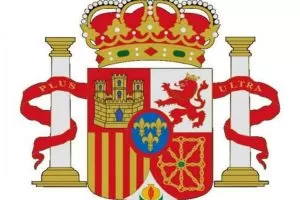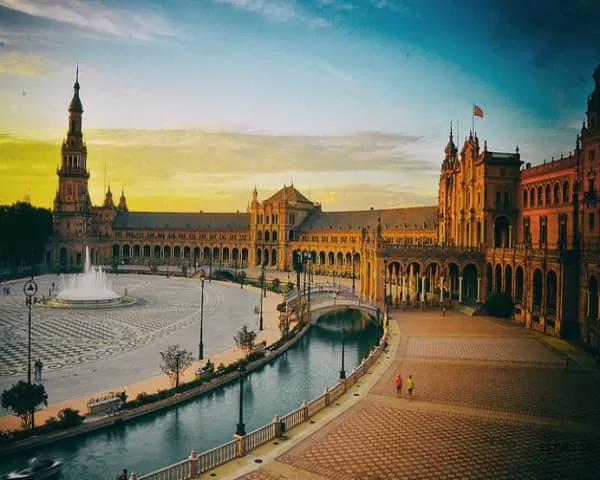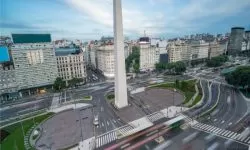Provinces of Spain
A Coruña. (Galicia), Álava – Araba. (Basque Country), Albacete. (Castilla-La Mancha), Alicante – Alacant. (Valencia), Almería. (Andalusia), Asturias, Ávila. (Castilla y León), Badajoz. (Extremadura), Barcelona. (Catalonia), Bizkaia. (Basque Country), Burgos. (Castilla y León), Cabrera. (Balearic Islands), Cáceres. (Extremadura), Cadiz. (Andalusia), Cantabria, Castellón-Castelló. (Region of Valencia), Ceuta, Ciudad Real. (Castilla-La Mancha), Cordoba. (Andalusia), Cuenca. (Castilla-La Mancha), El Hierro. (Canary Islands), Formentera. (Balearic Islands), Fuerteventura. (Canary Islands), Gipuzkoa. (Basque Country), Girona. (Catalonia), Granada. (Andalusia) Gran Canaria. (Canary Islands).
Guadalajara. (Castilla-La Mancha), Huelva. (Andalusia), Huesca. (Aragon), Ibiza. (Balearic Islands), Jaén. (Andalusia), La Gomera. (Canary Islands), Lanzarote. (Canary Islands), La Palma. (Canary Islands), La Rioja, León. (Castilla y León), Lleida. (Catalonia), Lugo. (Galicia), Madrid, Mallorca. (Balearic Islands), Malaga. (Andalusia), Melilla, Menorca. (Balearic Islands), Murcia, Navarra, Ourense. (Galicia), Palencia. (Castilla y León), Pontevedra. (Galicia), Salamanca. (Castilla y León), Segovia. (Castilla y León), Seville. (Andalusia), Soria. (Castilla y León), Tarragona. (Catalonia), Tenerife. (Canary Islands), Teruel. (Aragon) Toledo. (Castilla-La Mancha), Valencia-Valencia. (Valencian Community), Valladolid. (Castilla y León), Zamora. (Castilla y León), Zaragoza. (Aragon).
Find Study Scholarships Up to 100% in the Different Countries of the World
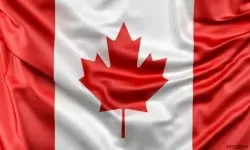
FREE STUDIES IN CANADA: Courses, Diplomas, Bachelor’s Degrees, Master’s Degrees and Doctorates
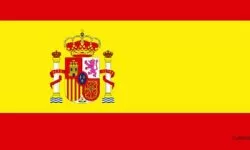
INTERNATIONAL STUDIES IN SPAIN in All Its Modalities

WHAT IS THE BEST UNIVERSITY IN THE UNITED STATES in 2019 and 2020 ?

BEST UNIVERSITIES IN CANADA
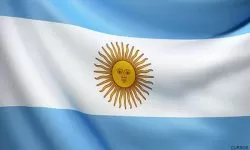
FREE STUDIES IN ARGENTINA: Courses, Diplomas, Bachelor’s Degrees, Master’s Degrees and Doctorates

UNIVERSITY OF THE UNITED STATES: Privates and Publics
Cities of Spain
Madrid, Barcelona, Seville, Zaragoza, Cordoba, Valencia, Malaga, Bilbao, Granada, Palma de Mallorca, La Coruña, Salamanca, Tarragona, Valladolid, San Sebastián, Las Palmas de Gran Canaria, Pamplona, Girona, Toledo, Santa Cruz de Tenerife, Lérida, Oviedo, Cáceres, Albacete, Cuenca, Gijón, Santiago de Compostela, Vitoria, Santander, Logroño, Ávila, Alicante, Teruel, Badajoz, Almería, Cádiz, Cartagena, Ceuta, Segovia, Huelva, Melilla, Vigo, Murcia, Orense, Guadalajara, Castellón de la Plana, Huesca, Jerez de la Frontera, Lugo.
Capital of Spain
Madrid is the third largest city in the European Union, only behind London and Berlin. It is the capital and largest city in Spain with a population of approximately 3.2 million. The entire metropolitan area of Madrid has an estimated 6.5 million inhabitants. The metropolitan area of the city is also the third largest in the European Union after London and Paris. The municipality of Madrid covers an area of approximately 233.3 square miles.
Madrid is called a business center, a cosmopolitan city, home of the Spanish government, public administration, parliament and of course not to forget that it is also home to the Spanish royal family. The city also plays an important role in the industrial and banking sectors.
A large number of industries found in Madrid are located in the southern region of the city, where you will find the main food, textile and metallurgical factories.
Madrid has a great influence on fashion, politics, culture, entertainment, science, the arts, the media, the environment and education. The city is home to two of the world’s most famous football clubs: Atlético de Madrid and Real Madrid. Madrid is also known for its intense cultural and artistic activities.
Culture of Spain
The Spanish culture is widely known for its flamenco music and dance, bullfights, fantastic beaches and lots of sunshine. It is, and has been for thousands of years, one of Europe’s cultural centres.
Spain has an extraordinary artistic heritage. The dominant figures of the Golden Age were the artists based in Toledo, El Greco and Diego Velázquez. Francisco de Goya emerged in the 18th century as Spain’s most prolific painter and produced some wonderfully unflattering portraits of royalty.
The art world at the beginning of the 20th century was influenced by a remarkable group of Spanish artists: Pablo Picasso, Juan Gris, Joan Miró and Salvador Dalí, ambassadors of artistic culture in Spain.
Spain’s architecture ranges from prehistoric monuments on Menorca in the Balearic Islands to the Roman ruins of Merida and Tarragona, the decorative Lonja in Seville, Mudejar buildings, Gothic cathedrals, castles, fantastic modernist monuments and Gaudí’s intricate fabulist sculptures in Barcelona. All of them are representative of the culture of Spain.
Another example of culture in Spain is the invention of the Spanish guitar, which was invented in Andalusia in the 1790s, when a sixth string was added to the Moorish lute. It obtained its modern form in the 1870s.
Economy of Spain
Spain is the fourteenth largest economy in the world in terms of gross domestic product (GDP) and is also one of the main economies in terms of purchasing power parity (PPP). This country is classified as a high-income category that is a member of the European Union, the Organization for Economic Cooperation and Development (OECD) and the World Trade Organization (WTO).
This country is known as one of the world’s leading high-level human development countries. It was affected by the global financial crisis of 2007-2008 which left a state of recession for the period 2009-2013. Spain’s economy contracted by around 9% as a result.
The country’s GDP at the end of 2016 was $1,536 billion with a purchasing power parity (PPP) of $1,704 billion. The country’s GDP growth for 2016 was 3.2%. Being in the European Union, it uses the euro as its currency. The unemployment rate remains at 18.6%, with a per capita income of $26700. It ranks 33rd in the ease of doing business.
Government of Spain
From 1833 to 1939, Spain had almost continuously a parliamentary system with a written constitution. Except during the First Republic (1873-74), the Second Republic (1931-36) and the Spanish Civil War (1936-39), Spain also had a monarchy. For a complete list of the kings and queens of Spain, see below.
From the end of the Spanish Civil War in April 1939 until November 1975, General Francisco Franco ruled Spain. The principles on which his regime was based were embodied in a series of fundamental laws (passed between 1942 and 1967) that declared Spain a monarchy and established a legislature known as the Cortes. However, Franco’s system of government differed radically from Spain’s modern constitutional traditions.
Under Franco the members of the Cortes, the Procuradores were not elected according to the democratic principle of one person, one vote, but on the basis of what was called “organic democracy. Instead of representing individual citizens, the procurators represented what were considered the basic institutions of Spanish society: families, municipalities, universities and professional organizations.
In 1969, Franco selected Juan Carlos de Borbón, grandson of King Alfonso XIII, to succeed him as head of state. When Franco died in 1975, Juan Carlos rose to the throne as King Juan Carlos I. Almost immediately, the king began a process of transition to democracy that in three years replaced the Franco system with a democratic constitution.
Education in Spain
The main objective of this level of education is to provide all children with a common education that enables them to acquire basic cultural elements, learn oral expression, writing and arithmetic, as well as progressive self-sufficiency of action in their environment. The certificate awarded at the end of this stage is called a school graduate.
Spanish Soccer Teams
In Spain, football is considered much more than just a game; it is part of the population’s cultural, social and economic lifestyle. The sport is well structured with every major city that has its team. The following are the 9 best football teams in Spain:
Real Madrid, FC Barcelona, Atlético de Madrid, Valencia, Villarreal, Sevilla, Real Betis, Espanyol, Real Sociedad.
Currency of Spain
The Euro is the Official Use Currency in Spain and the whole European Union.
Related Topics
Other Topics of Interest in ALPHAPEDIA

FREE IMAGE AND SOUND COURSE

FREE BACHELOR DEGREE IN CRIMINAL LAW

FREE MUSIC COURSE

FREE ART COURSE

FREE MASTER DEGREE IN PHILOSOPHY

FREE PROGRAMMING COURSE
Images of Spain
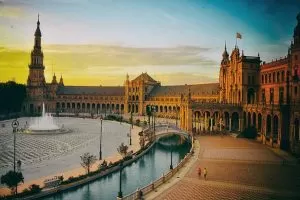
Flag of Spain
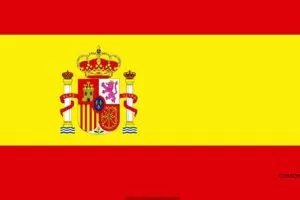
Map of Spain
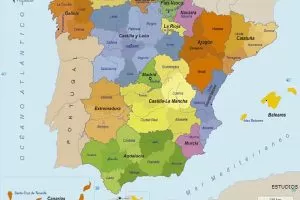
Spain Shield
